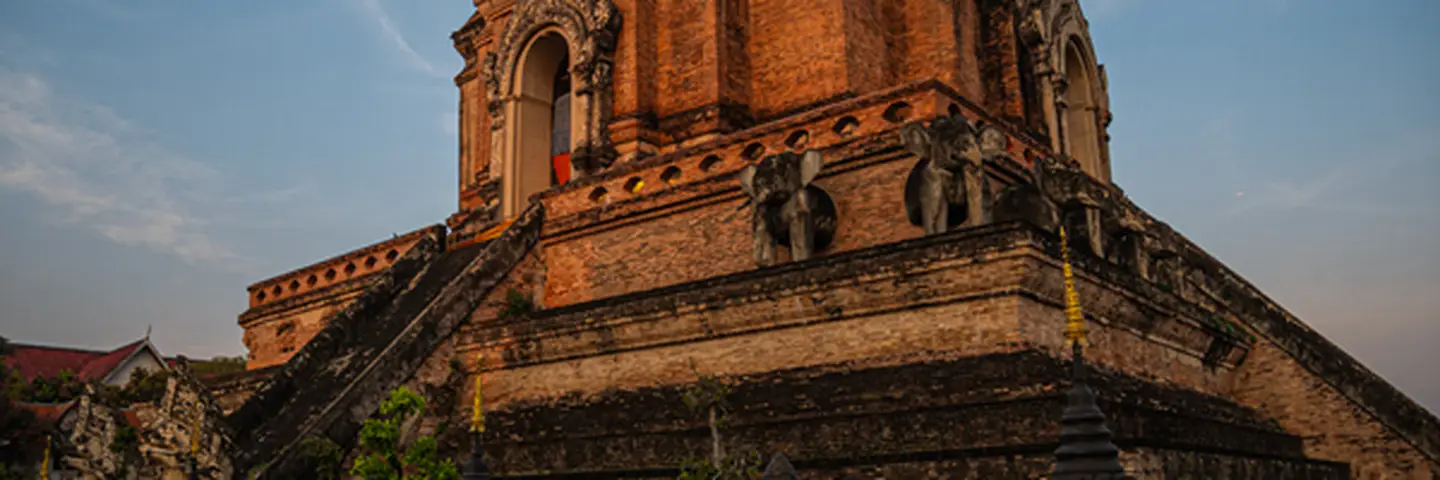Have you ever dreamt of immersing yourself in a city where stunning temples seem to pop up around every corner? Definitely, you came to the right place, as Chiang Mai is home to over 300 breathtaking Buddhist temples! Some are exposed right there in the Old Town, some others in hidden alleyways, but one thing is for sure, each temple has its unique charm.
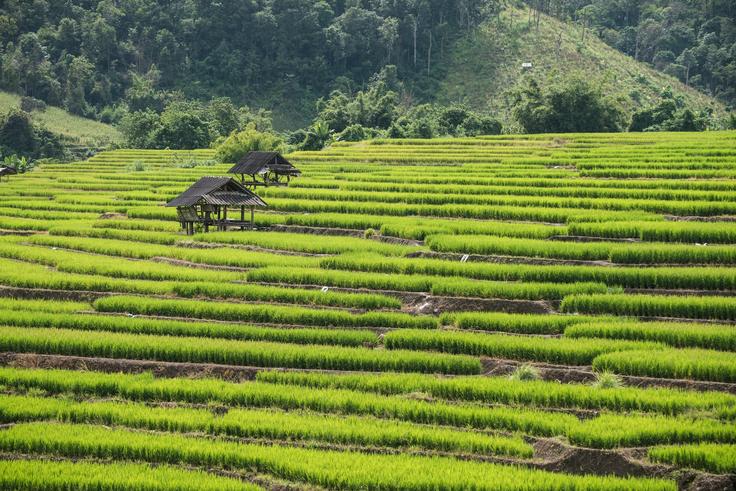
Located on top of the picturesque mountains of Northern Thailand, Chiang Mai is an ancient and charming city known for its rich cultural heritage, local cuisine, friendly locals and natural beauty. One would say that Chiang Mai, also known as the "Rose of the North”, is the perfect blend of ancient traditions and modernity. Surrounded by lush jungle greenery and rice terraces, dotted with ornate Buddhist temples, endless lively festivals and bustling markets, Chiang Mai offers the optimal cultural gateway for those seeking a peaceful and vibrant retreat.
The Old Town of Chiang Mai is actually an expansive city founded in the late 13th century, and boasts a square-shaped design, characterised by a grid of roads and numerous alleys, known as "sois," interconnecting the main streets. The historical Chiang Mai Old City, once fortified with protective walls and gates, is now represented by preserved city gates and weathered bricks, while the moat surrounding it serves as a decorative reminder of its past. Today, the bustling streets are lined with an array of Chiang Mai accommodations, massage parlours, tourist shops, charming cafes, and ancient Thai temples, creating a vibrant and diverse atmosphere for visitors to explore.
Are you ready for an inspiring adventure in the 'Kingdom of Lanna Thai'? In this article, we will guide you through the top 16 not-be-missed temples in Chiang Mai.
Wat Rajamontean, Wat Phra Singh, wat Chiang Man, Wat Chedi Luang, Wat Inthakhin Sadue Muang, Wat Chom Thong, Wat Suan Dok, Wat Buppharam, Wat Phan Tao, Wat Umong, Wat Ket Karam, Wat Pha Lat, Wat Ched Lin, Wat Phra That Doi Kham, Chiang Maiwat Sri Suphan and Lok moli.
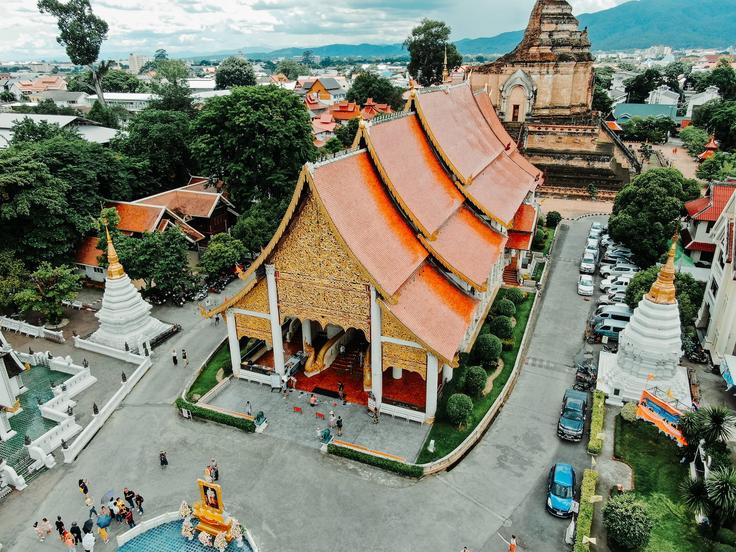
How to get to Chiang Mai
Chiang Mai has gained popularity in recent years as being the land of Digital Nomads and other travellers alike, it is easily reachable by airplane, bus, train or private minivan.
- Via plane: Chiang Mai counts with its own international airport (CNX), receiving frequent and regular flights from the biggest cities in Asia such as Seul, Singapore, Kuala Lumpur among others. We were actually thrilled about how well this international airport works, and how many flights it operates. It is a fairly small airport but well-connected, we have scored a couple of cheap and good flights to Ho Chi Minh City and Kuala Lumpur and from Bangkok. Just a breeze!
For domestic flights within Thailand, Chiang Mai is also pretty well equipped, operating regular flights to and from several cities. Domestic flights to Chiang Mai are available from Bangkok, Phuket, Krabi, Hat Yai, and other major cities. The perk of doing it domestically is that the flight durations are relatively short, making air travel a convenient option for those who prefer to save time. Typically, domestic flights from Bangkok to Chiang Mai take around 1.5 to 2 hours, while flights from southern cities like Phuket or Krabi take around 2 to 2.5 hours.

- Via train: For those more inclined to do this trip by train, Chiang Mai is well-connected to several cities in Thailand via train services operated by the State Railway of Thailand (SRT). Here are some of the most popular and easier train routes to Chiang Mai: #list:
- Bangkok to Chiang Mai: The most popular and frequent route, with multiple trains departing daily from Bangkok's Hua Lamphong Railway Station to Chiang Mai. This train journey can take anywhere from around 10 to 14 hours, depending on the type of train service you choose. They have an overnight sleeper train that although it generally takes longer, offers a more comfortable journey with sleeping seats.
- Ayutthaya to Chiang Mai: Trains also run from Ayutthaya, the historical city north of Bangkok, to Chiang Mai. However, the frequency might be lower compared to the Bangkok route, and with a total travelling time of approximately 8 to 12 hours.
- Phitsanulok to Chiang Mai: Phitsanulok, located further north of Ayutthaya, also has train connections to Chiang Mai. However, the frequency of trains on this route may not be as high as the Bangkok-Chiang Mai route. This journey typically takes around 5 to 8 hours, depending on the train type and schedule.
- Bangkok to Chiang Mai: The bus journey from Bangkok to Chiang Mai usually takes around 9 to 12 hours, depending on the route, traffic conditions, and the type of bus service (express, VIP, etc.).
- Ayutthaya to Chiang Mai: The bus journey from Ayutthaya to Chiang Mai typically takes about 7 to 9 hours, depending on the specific bus and its stops along the way.
- Phitsanulok to Chiang Mai: The bus journey from Phitsanulok to Chiang Mai generally takes around 5 to 7 hours, depending on the route and the type of bus.
- Chiang Rai to Chiang Mai: The bus journey from Chiang Rai to Chiang Mai typically takes around 3 to 4 hours, depending on the type of bus and the route taken.
- Lampang to Chiang Mai: The bus journey from Lampang to Chiang Mai generally takes approximately 1.5 to 2.5 hours, depending on the type of bus service and road conditions.
- Sukhothai to Chiang Mai: The bus journey from Sukhothai to Chiang Mai usually takes around 4 to 5 hours, depending on the specific bus and the route.
- Mae Hong Son to Chiang Mai: The bus journey from Mae Hong Son to Chiang Mai can take approximately 5 to 7 hours, depending on the road conditions and the type of bus service.
- Pai to Chiang Mai: The bus journey from Pai to Chiang Mai typically takes about 3 to 4 hours, depending on the type of bus and the road conditions.
To give you an idea, when we travelled from Chiang Rai back to Chiang Mai, which typically takes around 3 to 3.5 hours by car, we paid around 3000 baht. It is an expensive price compared to what the bus ride costs around 200-400 baht for more or less the same amount of time. We did this when my parents came as they are a bit older and I guess fixated on certain comfortable standards way of travel. Otherwise, we would advise against it.
Where to stay. Our recommended accommodation in Chiang Mai.
Day Off House Chiang Mai Near Walking Street, is located right in the heart of Chiang Mai! It is honestly a great place to home base while in Chiang Mai, the staff are so helpful and friendly that you won’t want to leave. Reviews are great, it is very affordable, the beds are super comfy and Wifi works wonderfully. We had a lovely stay!

How many temples are there in Chiang Mai?
Chiang Mai is known to have over 300 Buddhist temples scattered throughout the city and its surrounding areas. Trying to visit all of them would be quite a dilemma!
That is why go ahead and check out our carefully curated list of not-to-be-missed temples in Chiang Mai! We have handpicked the most charming and beautiful temples for you to explore. We understand that "temple hunting" can be tiring and overwhelming, so we have made it more helpful by presenting to you our top 16 recommendations with detailed descriptions. After reading about them, feel free to pick the ones that resonate with your cultural interests, or if you are up for the challenge, take on the mission to see all 16!
If you are a traveller who would rather just get to the best ones, not get bombarded with tons of info, locations and so on, you could just go straight to The Venerable Landmarks of Chiang Mai in a badge of Honour quality tour with our recommended partners in Viator.
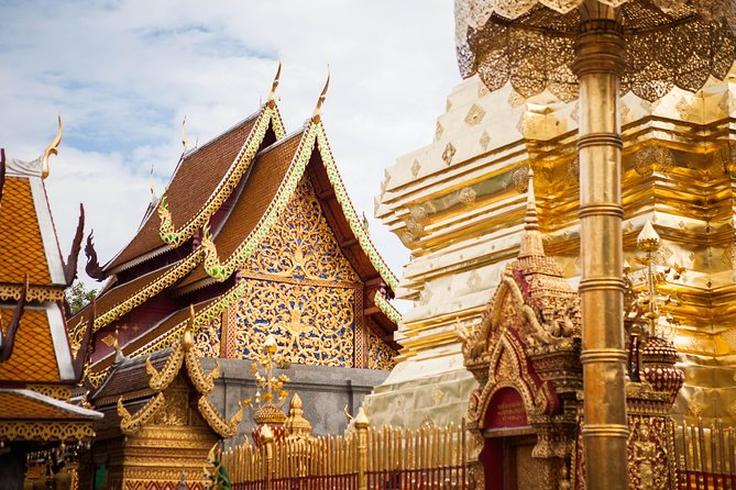
Top 16 Chiang Mai Temples worth a visit
In Chiang Mai, you will find temples with diverse origins and histories. Some temples date back to the city's ancient beginnings, while others were established more recently in the 20th century.
While a few temples stand independently, others form part of vast temple complexes. Among them, some have undergone extensive renovations, preserving their splendour, while others bear the marks of time, displaying a charming state of dilapidation. Let’s get to them!
*Pro-tip: A little piece of advice before we start, as with all Buddhist temples in Thailand, visitors are advised to dress modestly, covering their shoulders and knees as a sign of respect. Carrying a sarong with you and shoes that can easily be taken off is recommended.
1 Wat Rajamontean
Located across from Wat Molee temple on Shri Poom Road and easily accessible by the wooden pedestrian bridge, you will find another favourite of ours Wat Rajamontean! This non-typical Thai temple amalgamates various architectural styles and stands out for hosting a majority of monks from the neighbouring country of Laos.
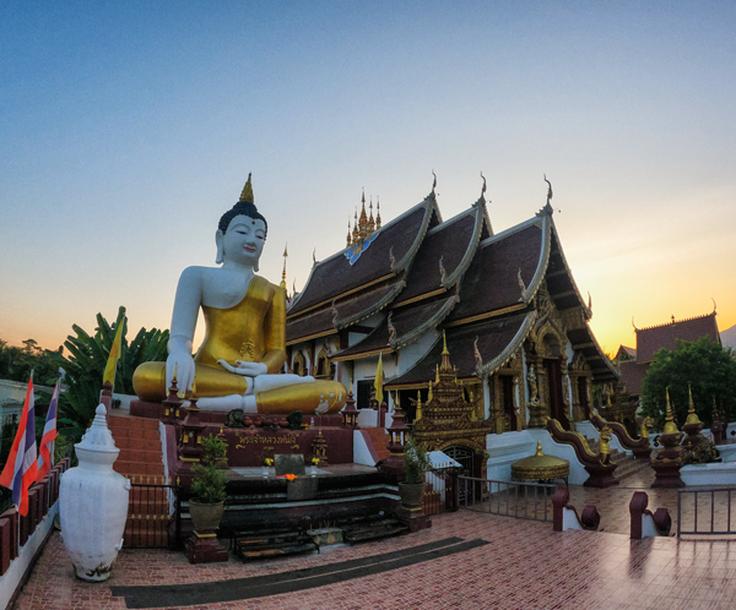
Although it is a somewhat small temple, it is rich in history and interesting facts. It actually dates back to the 15th century, this sacred sanctuary was built during the reign of the renowned monarch, King Tilokanat, from the esteemed Lanna Kingdom.
Also known as the Dragon Temple, the big Buddha statue against the blue sky and the beautifully detailed burgundy-golden temple with dragon statues on the front offer a scene that will bedazzle you.
In fact, it is among the pioneering temples that introduced the portrayal of Buddha in its female form, while also featuring a north-facing Gigantic Buddha statue, assumedly in the posture of the Earth Witness.
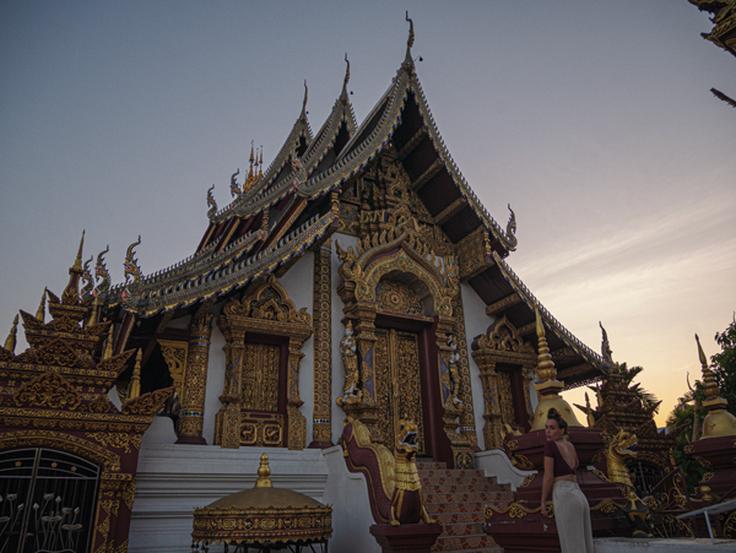
2 Wat Phra Singh
Wat Phra Singh is a revered Buddhist temple in Chiang Mai, Thailand, dating back to the 14th century. The temple's name, "Wat Phra Singh," means "The Monastery of the Lion Buddha," honouring the sacred Phra Singh Buddha image enshrined in its main viharn. The temple's captivating Lanna-style architecture boasts intricately carved wooden details and impressive gabled roofs, showcasing the skilled craftsmanship of the past.
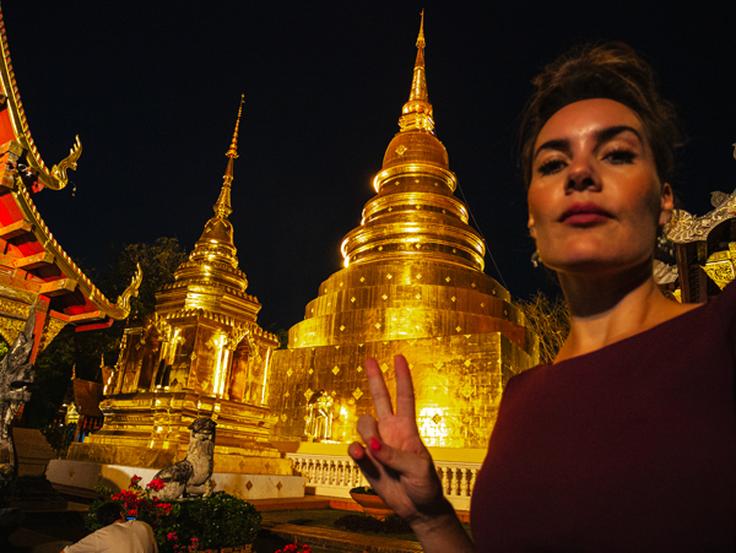
Viharn Lai Kham
The interiors are equally charming, with the Viharn Lai Kham stealing the spotlight. This ornate building boasts stunning murals that depict tales from Buddha's life and various Jataka stories, all embellished with gold leaf. If you move your focus towards the centrepiece of the temple, the Phra Singh Buddha image, is a sight to behold. This bronze Buddha statue, adorned with intricate details, is revered by locals and visitors alike.
*Pro-tip: Each year, the temple hosts the "Songkran Phra Singh" festival during the Thai New Year (Songkran) in April. The festival is a celebration of spirituality and culture, drawing crowds from all around to partake in its religious and cultural activities.
There is typically no entrance fee to enter Wat Phra Singh, but donations are appreciated to support the preservation and maintenance of this esteemed religious site. It is also possible to arrange a private guided tour for a small fee for the monks to gain deeper insights into the temple's rich history and the stories behind its architectural masterpieces for those interested travellers.
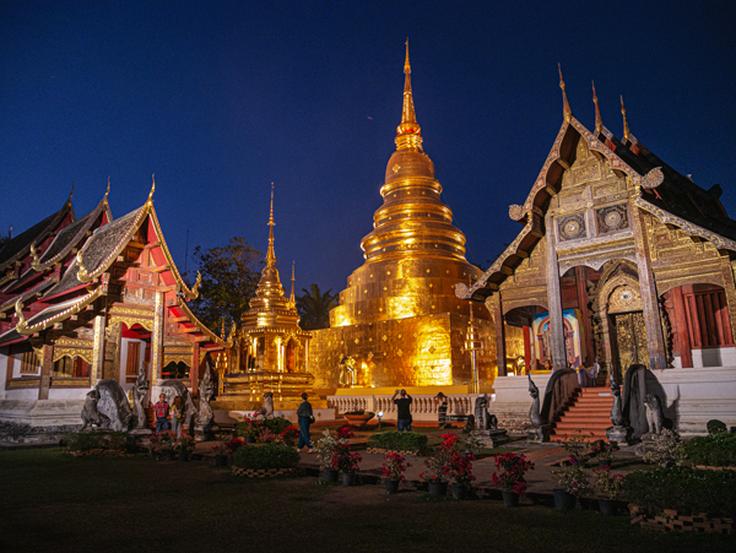
Since Wat Phra Singh is located within Chiang Mai's old city, it serves as a gateway to other nearby attractions, such as Wat Chedi Luang, Wat Phan Tao, the Three Kings Monument and Tha Pae Gate, all of them historical landmarks that are within walking distance from Wat Phra Singh, allowing visitors to continue their exploration of the city's cultural and historical treasures.
3 Wat Chiang Man
This landmark is actually nestled within the ancient walls of Chiang Mai Old Town. Wat Chiang Man stands as a testament to the city's rich history and cultural heritage, as its origins date back to the early 13th century. It proudly holds the title of being the oldest temple in Chiang Mai, a true guardian of the region's spiritual legacy.
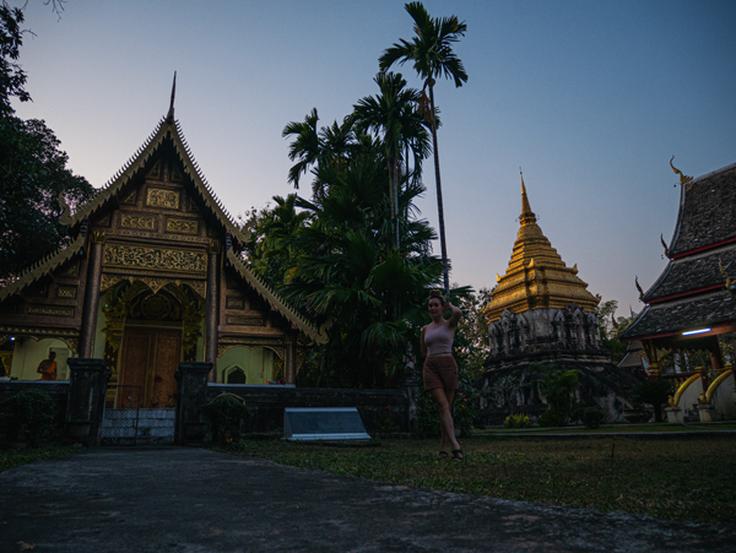
This historical temple, which was established during the reign of King Mengrai, (the visionary founder of the Lanna Kingdom), played a pivotal role in the city's inception. This is, its historical significance lies not only in its age but also in its function as the first residence of the king when Chiang Mai was declared the capital! When it comes to its architecture, there is a beautiful blend of Lanna and Haripunchai styles, with intricately carved wooden details and gabled roofs.
Phra Seh Taang Kamanee and Phra Sila Buddha
Within Wat Chiang Man, a small assembly hall safeguards two esteemed Buddha statues, renowned for their extraordinary powers. The revered Crystal Buddha (Phra Seh Taang Kamanee), a diminutive 10-centimetre quartz crystal statue, is cherished for its believed protective influence against calamities. This image of Buddha is also known to bring blessings and good fortune to those who pay their respects. The other venerated Buddha is The Phra Sila Buddha, carved from stone, which is honoured for its reputed ability to bring forth rain.
Phra That Chedi Liam. Sacred Elephant Encircled Stupa
Once a royal residence, boasts 15 elephant sculptures on its second level and is believed to hold a Sacred Hair Relic of the Buddha. On the temple grounds, you will find peaceful courtyards adorned with lush greenery and ancient stupas that speak of a rich spiritual past.
As you can see, the Wat Chiang Man is not just a monument of the past, but a living testament to the enduring spirit of Chiang Mai's cultural heritage.
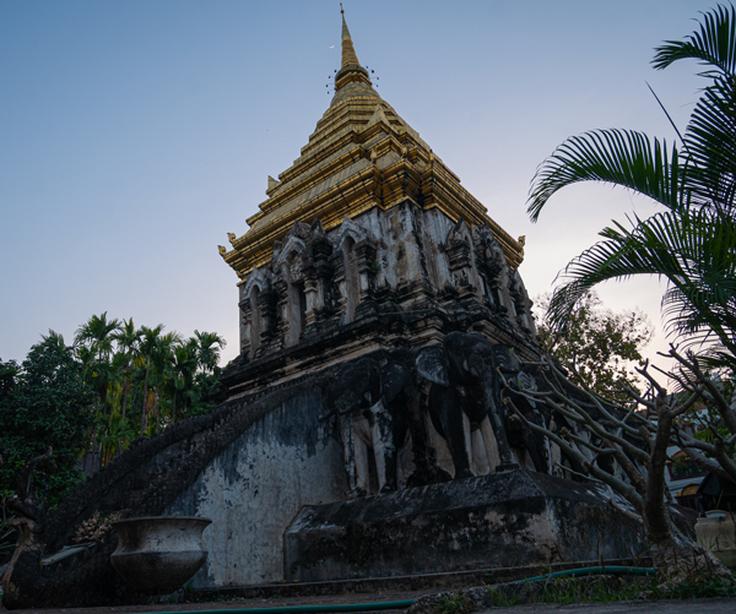
4 Wat Chedi Luang
Wat Chedi Luang, located in the heart of Chiang Mai's old city, is a historically significant and revered Buddhist temple. Its name, "Chedi Luang," translates to "Royal Pagoda," reflecting its former grandeur and royal patronage. One of the main reasons why travellers should visit this temple is the fact that this temple's history dates back to the 14th century when it was commissioned by King Saen Muang Ma to house the ashes of his father. Over the years, Wat Chedi Luang underwent several expansions and renovations, turning it into one of the most impressive structures of its time in the Lanna Kingdom.

Chedi Luang Pagoda
The chedi, or pagoda, at the centre of the temple complex, was once the tallest building in ancient Chiang Mai, standing at an awe-inspiring height of approximately 82 meters (270 feet). However, in 1545, an earthquake struck Chiang Mai, causing significant damage to the chedi. Its upper part collapsed, leading to the temple's eventual abandonment. It wasn't until the 1990s that efforts were made to reconstruct parts of the chedi, restoring its former splendour and architectural significance. Even today, the renovation efforts are palpable and visible throughout the temple. Still, within the temple, visitors can marvel at the towering chedi, adorned with intricate stucco and stone carvings, showcasing a blend of Lanna and classic Thai architectural styles.
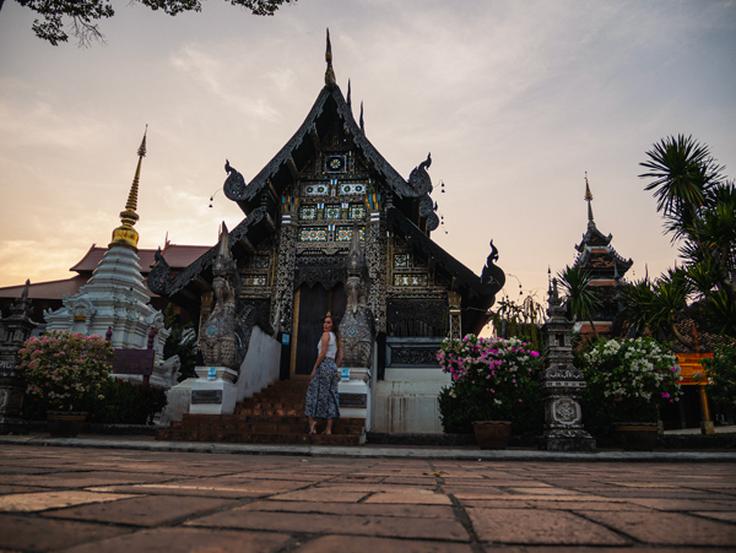
As remarkable treasures within this temple, there is one of the most revered relics housed within the temple complex is the Emerald Buddha (Phra Kaew), an iconic statue of the Buddha carved from jade. Although the original statue is now situated in Bangkok's Grand Palace, a replica of the Emerald Buddha is enshrined at Wat Chedi Luang, offering devotees a chance to pay their respects and seek blessings.
Lastly, at Wat Chedi Luang, the spacious assembly hall hosts daily prayers and ceremonies, adorned with mesmerising murals depicting Buddhist teachings and local history, highlighting the temple's cultural significance. Serving as a testament to Chiang Mai's ancient heritage, the temple attracts visitors from all walks of life seeking serenity and a glimpse into the vibrant cultural tapestry of northern Thailand.
5 Wat Inthakhin Sadue Mueang
Wat Inthakhin Sadue Mueang, also known as Wat Inthakhin, is a significant temple in Chiang Mai, Thailand, renowned for housing the revered "City Pillar." In Thai culture, City Pillars hold immense spiritual and cultural importance, believed to protect the city and its people. The temple's main highlight is the sacred wooden City Pillar, intricately carved and made from a specially chosen tree. It is enshrined within the "Chedi Lak Mueang," an impressive stupa symbolizing the city's heritage.
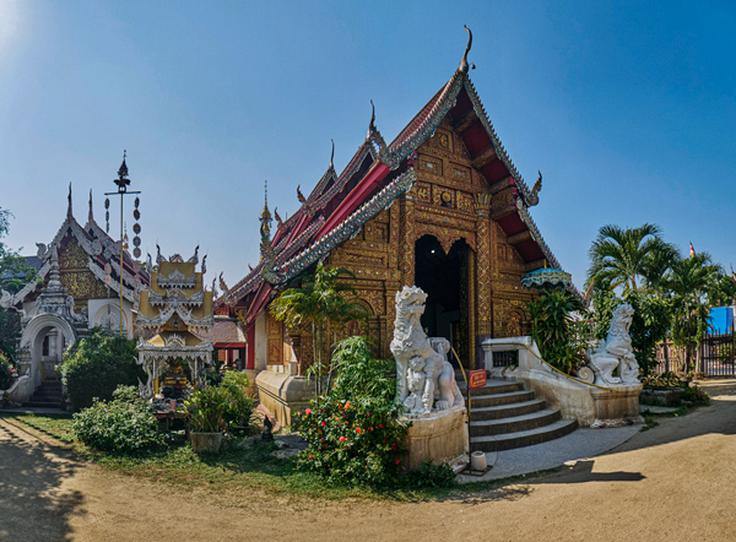
Throughout the year, Wat Inthakhin Sadue Mueang remains an active place of worship, hosting various religious ceremonies and festivals. Songkran, Loy Krathong, and Visakha Bucha are among the important occasions celebrated with vibrant festivities and traditional rituals, showcasing the deep spiritual devotion of the locals.
Just like most Buddhist temples in Thailand, this wat also holds an ancient legend where the Inthakin pillar was sent by the god Indra to protect the town from malevolent demons. However, the people neglected the pillar, and the town fell into ruin. In 1296, King Mengrai discovered the old city pillar and placed it at the centre of Chiang Mai when establishing the new capital. The legend continues to be an integral part of Chiang Mai's cultural heritage, with Wat Sadue Muang serving as a sanctuary for the revered City Pillar.
Inthakin Festival
The Inthakin Festival is a significant event for Chiang Mai, celebrating the veneration of the City Pillar and old traditions. Held following the lunar calendar, the week-long festival typically takes place in late May or early June. During the festival, locals come together to honour the sacred City Pillar through sacred rituals led by Buddhist monks and local dignitaries. These ceremonies include chanting sacred verses and offering symbolic items like incense and flowers to express deep respect for the City Pillar's protective powers.
Colourful processions with beautifully adorned floats showcase the city's cultural heritage, reflecting a strong sense of community and pride among the residents. Traditional performances, such as music, dance, and cultural shows, add to the festive atmosphere, creating a vibrant celebration of Chiang Mai's rich cultural tapestry. The festival's dates are usually around the end of May to the beginning of June, making it an auspicious occasion for the city and its inhabitants to celebrate their cherished cultural heritage.
6 Wat Lok Molee
Wat Lok Moli, also known as Wat Lok Molee, is an ancient and significant Buddhist temple that offers visitors an authentic experience of local Buddhist practices through its daily rituals and ceremonies. If you are after understanding the rich cultural background of Chiang Mai, this temple is the perfect place to do so.
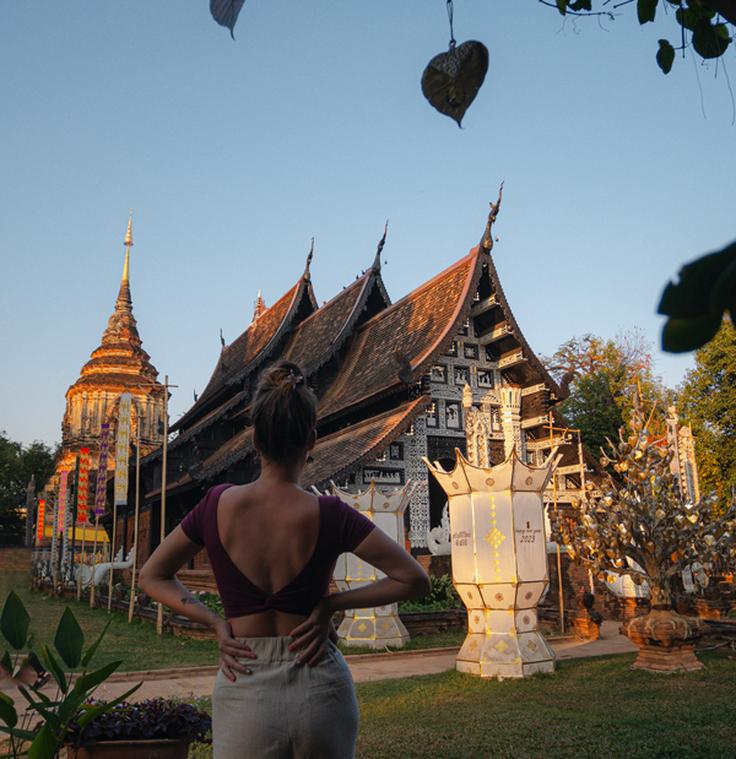
The elegant Viharn, with its intricate wooden carvings and impressive gabled roofs, serves as the main assembly hall, housing sacred Buddha images and hosting prayers and ceremonies. The temple's unique square-shaped stupa, thåe Chedi, stands as a symbol of enlightenment, adding to its charming allure.
Legend
Beyond its architectural beauty, Lok Moli Temple is steeped in legends and stories that add to its allure. One such legend tells the story of the temple's establishment during the reign of King Mengrai, the founder of the Lanna Kingdom. According to the legend, King Mengrai discovered a relic of the Buddha at the site where the temple now stands. To honour the sacred relic, he ordered the construction of Lok Moli Temple, making it a site of great spiritual significance.
Mon Influence
The Mon influence at Lok Moli Temple adds an intriguing layer of appreciation for its rich heritage and significance in Chiang Mai's cultural tapestry. The temple's intricate wooden carvings and artistic designs showcase the Mon people's craftsmanship, blending their artistry with the Lanna Kingdom's architectural style. This cultural exchange reflects the historical connections between the two regions and serves as a reminder of the interconnectedness that shaped Chiang Mai's identity. From rituals to festivals, the Mon influence can be felt throughout the temple, making it a unique and culturally diverse destination.
7 Wat Sri Suphan (The Silver Temple)
Wat Sri Suphan, famously known as the Silver Temple, is a remarkable Buddhist temple in Chiang Mai, Thailand, celebrated for its intricate silver decorations adorning both its exterior and interior. This exceptional temple stands apart with its skilled craftsmanship, preserving the art of metalwork, and showcasing Chiang Mai's proud heritage. The temple's architecture masterfully blends traditional Lanna style with contemporary elements, creating a captivating and awe-inspiring sight for all who visit.

Inside the temple, a stunning silver Buddha image takes centre stage, surrounded by ornate silverwork and vivid murals depicting Buddhist stories and teachings. However, it's essential to note that Wat Sri Suphan has a unique tradition that restricts women from entering the main assembly hall. This practice is in adherence to the temple's strict monastic rules, reflecting its commitment to preserving longstanding customs. Oh well!

During the New Year's Day celebration, Wat Sri Suphan becomes even more vibrant and lively. It was so awesome to be part of this special occasion, as when we arrived at the temple, we were greeted by the bustling city-wide prayer around the temple grounds. There was a full ceremony with all the local monks plus the chief monk who was leading a ritual around the temple together with all the residents and travellers like us. We were all holding candles lit up, with background chants and a meditation mentor who was guiding everyone to feel the peace and spirit of Buddha as we were following the monk procession.
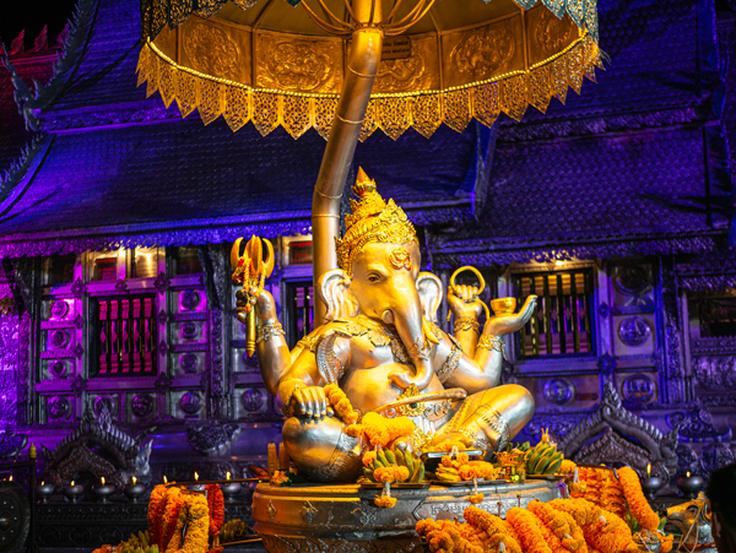
The air was filled with a sense of excitement and reverence as people from all walks of life came together to welcome the new year with prayers and offerings! On top of that, since it was such a special occasion, the temple's colourful lights came on and they were interchanging constantly as the ceremony was taking place, it was truly a mesmerising atmosphere.
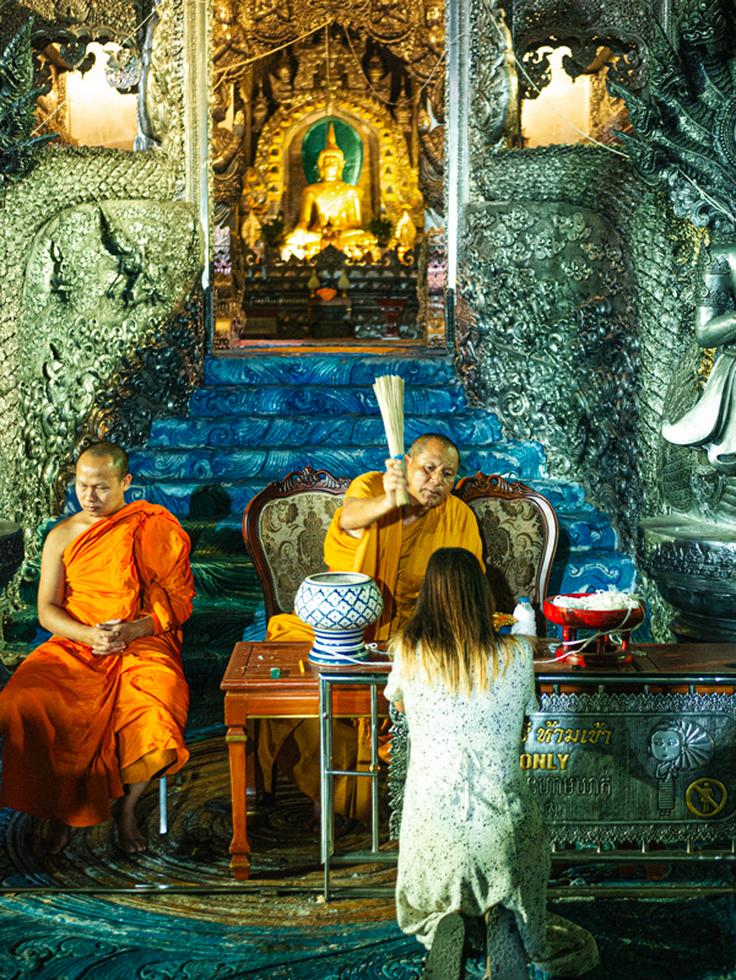
Lastly, by the end of the ceremony, we had the opportunity to receive blessings from the chief monk. With a rattan stick gently tapped on our heads as part of the traditional blessing ritual, we felt a profound sense of connection to the spiritual heritage of the temple. He even whispered “prosperity, luck and peace to you” in my ear, it was an absolutely once-in-a-lifetime experience. After the blessings, we explored the intricate silverwork and craftsmanship that adorned the temple's exterior and interior. The exquisite silver designs depicted various scenes from Buddhist teachings and local history, showcasing the temple's cultural significance.
Later to wrap up that visit, we ventured to the street food market on the bustling streets nearby, where we enjoyed a delightful dinner and shared our experiences of this magical day at Wat Sri Suphan.
8 Wat Phra That Doi Kham
Wat Phrathat Doi Kham, built during the reign of Queen Jammathewee of Lumphun, holds a special place in history, made by both of her devoted sons in B.E.1230 (A.D. 687). Quite an ancient temple! Located merely 10 kilometres away and to the southwest of Chiang Mai City in the Mae Hia sub-district, you will find the venerated Wat Phrathat Doi Kham.
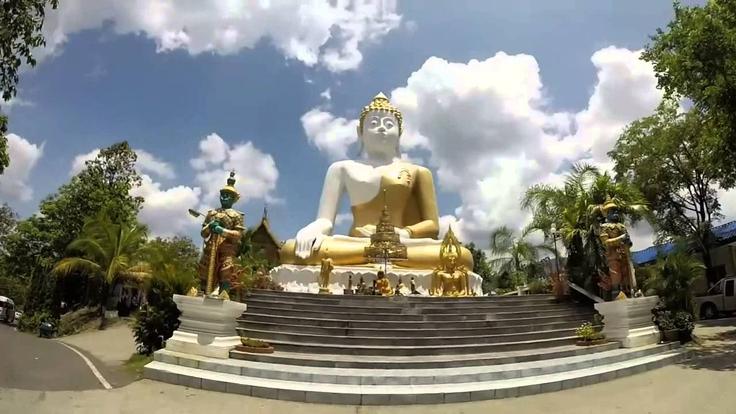
Adorned with precious Lord Buddha relics, a temple hall, a serene monastery, and exquisite stucco Buddha statues, this sacred haven was once known as Suwannabanpot Temple. It was later changed to "Doi Kham" temple, as a loving symbol from the local villagers.
Despite the familiarity of most visitors with Wat Phrathat Doi Suthep, perched upon a mountain overlooking the town of Chiang Mai, a hidden gem of divinity awaits nearby. Often referred to as the Golden Temple, or Wat Doi Kham, this Buddhist sanctuary boasts breathtaking views of both Chiang Mai City and the lush, forested expanse of Doi Pui Mountain.
To get to the top, you have to follow a long Naga Stairs, composed by a procession of over 300 steps that will lead all the way to Wat Prah That Doi Suthep. Going up the temple's steep stairs, offer inspiring vistas, though the journey can be a test of endurance! Our mother, in her 60s, found the steep climb challenging after a day filled with temple explorations! To our misfortune, we later learned of a discreet elevator tucked away on the temple's side, offering a lift from the base for a modest fee of 40 baths, bummer! Nevertheless, for those in full fit shape definitely go up the stairs as the journey and after-views are totally worth it!
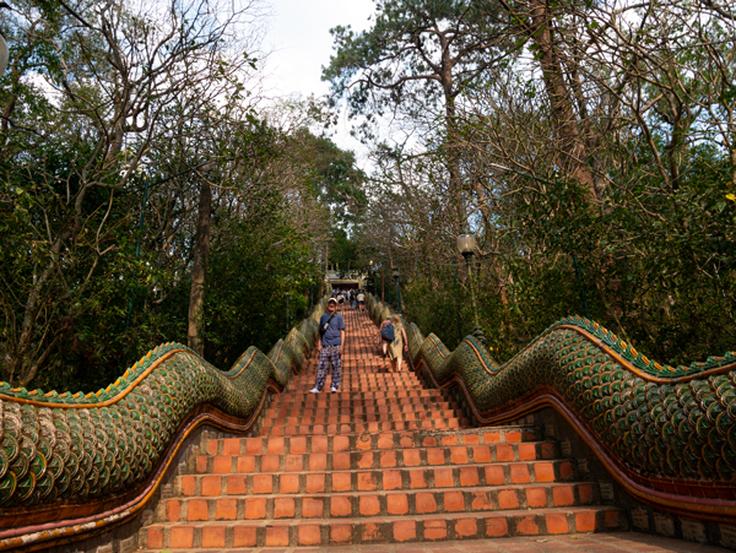
Once at the top, as you approached the temple, you will notice the magnificent golden chedi, which is the focal point of Doi Kham Temple and from which the name is given “The Golden Buddha”. Inside the temple complex, there are tons of things to check out, all of them adorned to the brim with beautiful gardens, statues of Buddha, and intricate architectural details. The temple's design is the result of a fusion of traditional Lanna and contemporary styles, making it a unique blend of old and new.
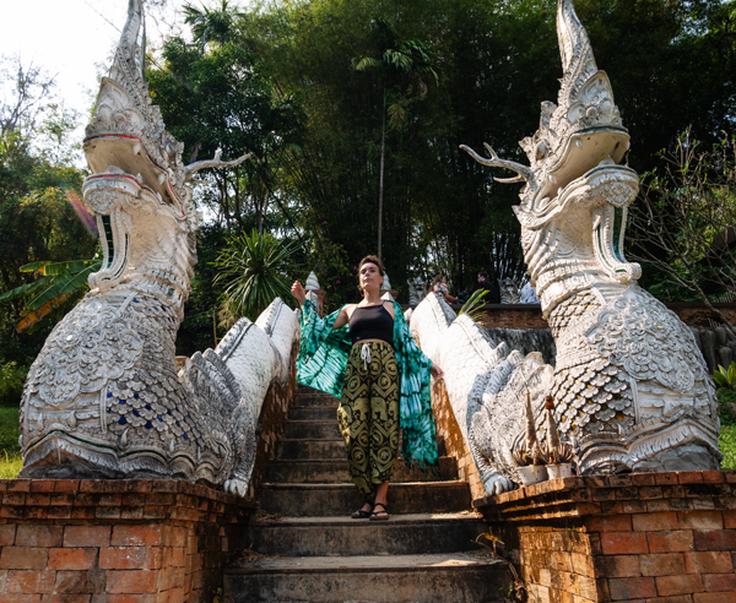
As with many Thai temples, Doi Kham Temple houses a collection of amulets and charms believed to offer protection and good fortune. In fact, there are monks through the temple offering blessing ceremonies for a small donation (we always give around 200 baht), they chant and bless you and gift you with a bracelet. It is a pretty awesome and authentic experience!
Doi Kham Temple is not only beautiful but also it offers a little escape from the hustle and bustle of the city. The journey up the mountain provides a scenic drive, you can do this via private cab or in the local red bus for 50 baht! The place is so gorgeous that the complex counts on a viewing deck, almost like a balcony from where you can see the entire Chiang Mai city.
9 Wat Chet Lin
Wat Chet Lin, also known as Wat Chet Yot or the Temple of the Seven Spires, is one of those stunning temples! The history of Wat Chet Lin dates back to the 15th century, during the reign of King Tilokkarat of the Lanna Kingdom. The temple's construction was inspired by the Mahabodhi Temple in Bodh Gaya, India, where the Buddha attained enlightenment. This is why the seven pagodas symbolize the steps to enlightenment, and the temple as a whole holds profound spiritual significance for Buddhists.
This temple also stands out for its unique architecture, reflecting a blend of different cultural influences mainly a strong Sri Lankan influence, that have shaped its design.
The temple complex features seven pagodas, each representing a different step on the path to enlightenment. These pagodas are adorned with intricate carvings and elaborate decorations, showcasing the exceptional craftsmanship of the artisans who built them.
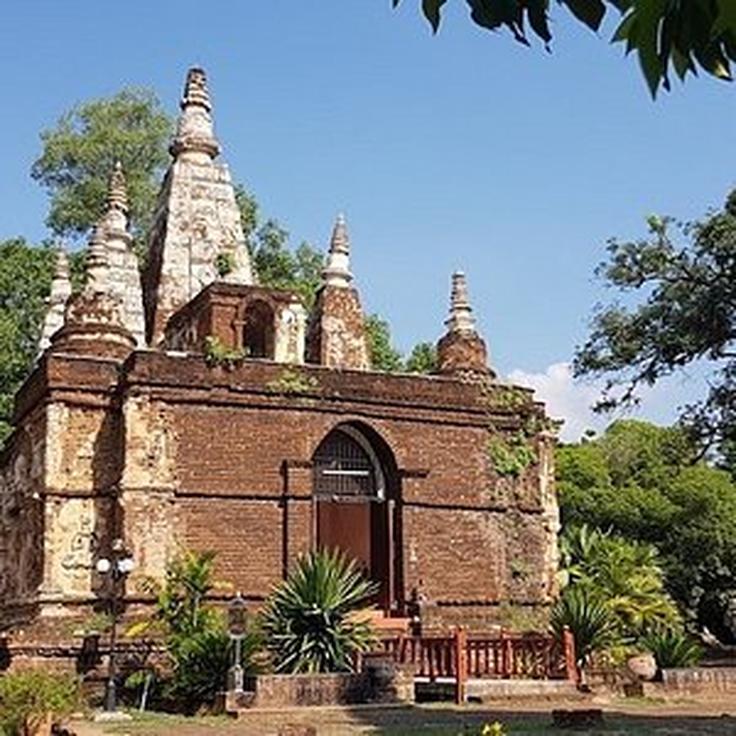
The central pagoda is the tallest and most prominent, soaring majestically into the sky. One of the distinctive features of Wat Chet Lin is the viharn, the main assembly hall, which boasts a striking square-shaped design with a pyramidal roof. The viharn houses a large Buddha image, attracting devotees who come to pay their respects and offer prayers.
As you wander through the temple grounds, you'll come across a serene pond surrounded by lush greenery and bamboo groves. This area provides a peaceful and picturesque setting, perfect for relaxation and contemplation.
Local Legend
The fascinating local legend says that a King from Sukhothai, King Tilokkarat of the Lanna Kingdom, who was on a pilgrimage to worship the sacred relics of Buddha in India, made a stop in Chiang Mai. During his visit, he was struck by the beauty and serenity of the location where Wat Jet Yot now stands.
Impressed by the tranquil surroundings, the King decided to build a temple at the spot to commemorate his visit. The story goes that seven princes from different neighbouring kingdoms came to Chiang Mai to pay homage to the king and offer their allegiance. In return, the king constructed seven pagodas in their honour, which later became known as the Seven Spires of Wat Chet Lin. The temple's construction became a symbol of his spiritual journey and devotion to Buddhism!
10 Wat Pha Lat
Wat Pha Lat, a hidden gem tucked away in the heart of the jungle, offers a delightful contrast to the more touristy Wat Phra That Doi Suthep in Chiang Mai. While many groups of tourists and locals make their way up Doi Suthep mountain in search of temples and adventure, Wat Palad Temple often remains undiscovered, overshadowed by its more renowned counterpart. Though Wat Phra That is undeniably beautiful, its popularity attracts a large number of visitors and numerous shops, giving it a bustling atmosphere.

Wat Palad Temple, surprisingly, isn't far from the mountain's base, just a 5 to 10-minute drive on the left-hand side. At first glance, you might assume it's just a temple with some Buddha statues near the road leading up the mountain. However, if you take the little road to the left of that temple and venture further, you'll step into a fantastical world.
In its heyday, Wat Palad was a magnificent 14th-century temple, initially serving as a refuge for pilgrims on their foot journey to worship at Wat Doi Suthep. With the construction of a road in 1935, it evolved into a monastic residence focused on meditative retreats, following Buddhism's path to enlightenment through meditation and solitude.
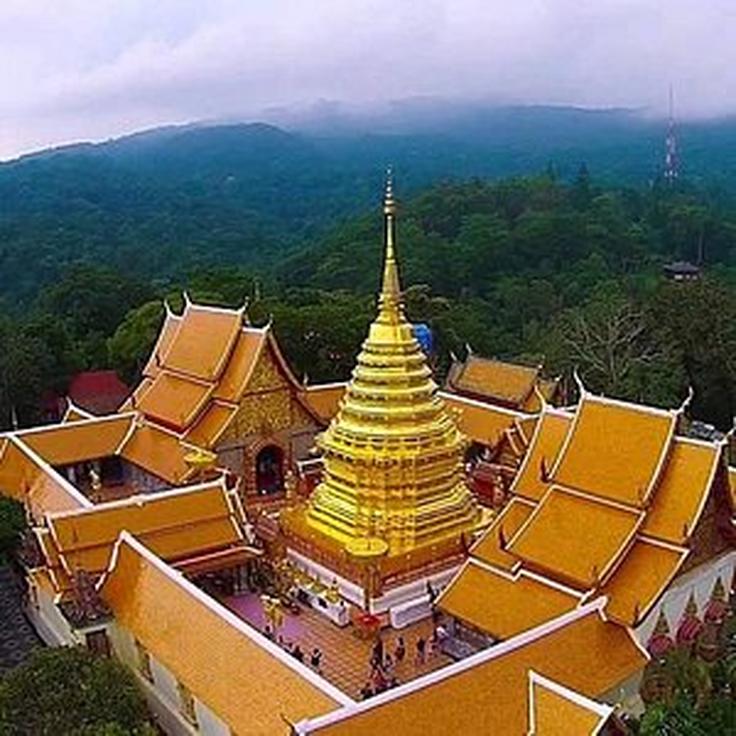
The name "Wat Palad" roughly translates to "Forest Monastery of the Sloping Rock," aptly named for the broad bluff on which it stands, seemingly harmonizing with the lush tropical jungle surrounding it. As we wandered through the grounds, we encountered a small cave housing ancient Buddha images, and crossing an arched footbridge that has stood for a century.
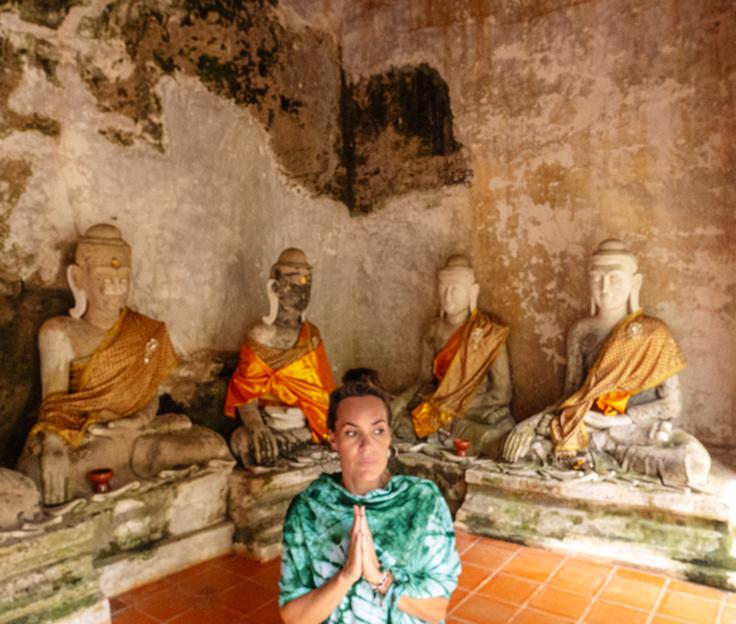
The temple complex features a central waterfall, though when we visited during the dry season, the water was reduced to a mere trickle, exposing the smooth riverbed. Legend has it that the white elephant of King Kuena, a local ruler, once rested near this waterfall while carrying the sacred relic of the Buddha's shoulder up the slope of Doi Suthep. Imagining the mahout and elephant pausing here for a drink was a moment of contemplation and reverence!
11 Wat Ket Karam
Make sure to add Wat Ket Karam to your list of not-to-be-missed temples!
Despite being located across the river, don't be discouraged; it's easy to reach. Situated on the west bank, just opposite Worrarot market, you can cross the footbridge and find it right across the road.
This temple, constructed in 1428 on the orders of King Sam Fang Kaen from the Mangrai Dynasty, once thrived in a bustling commercial area primarily inhabited by Chinese merchants. However, in 1545, an earthquake struck and toppled the chedi at Wat Chedi Luang and also caused damage to Wat Ket Karam's chedi.
In the temple courtyard, you'll find a delightful community-based museum established in 1999, exhibiting various artifacts and historical records generously donated by the public.
As you enter, you'll be greeted by the nagas with their extended horns resting along the balustrades. Inside the porch, Lanna lanterns hang, and carved wood figures of Devata angels gracefully express the wai gesture.
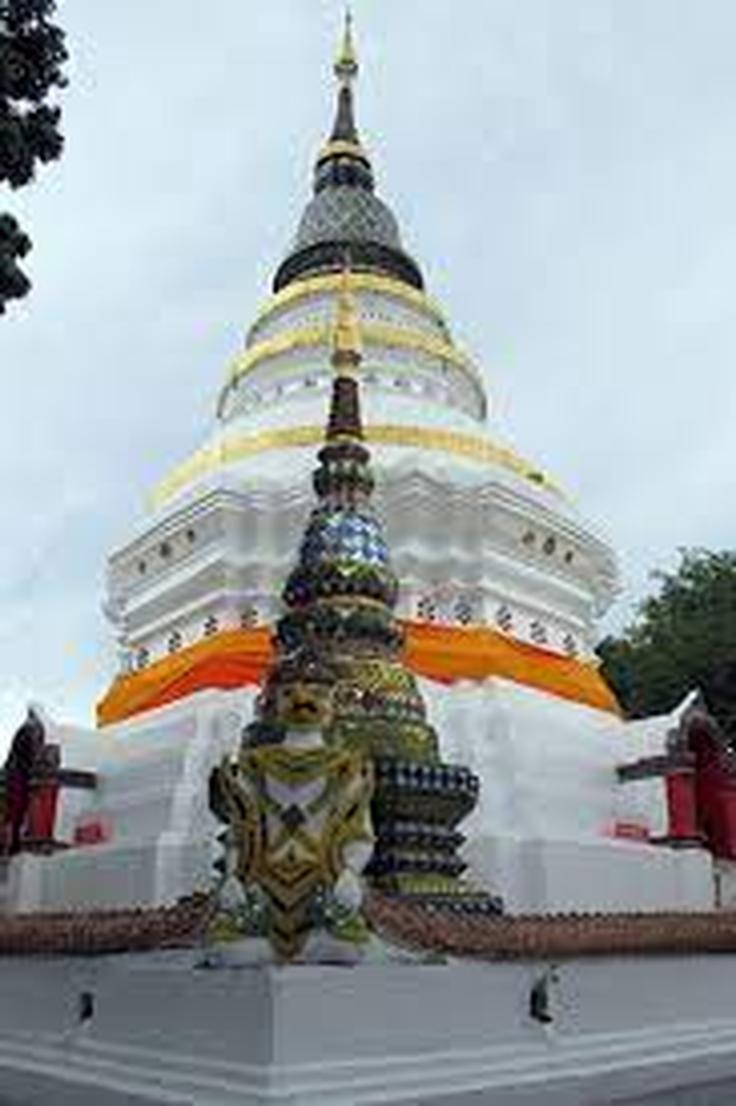
The viharn, built in the 19th century, boasts a stunning Lanna-style roof with five tiers, symbolizing royal status. The viharn is divided into two sections, featuring steeply sloping roofs adorned with gilt nagas and elegant chofa finials at the roof's apex.
The interior of the viharn is bathed in natural light, thanks to the large windows, although the teak columns and ceiling add a sense of darkness. The gilded columns showcase intricate floral motifs and lotus flower capitals, while the curious, shiny colored balls hang from the ceiling. The walls, however, are plain white, lacking the usual murals.
The chedi, named "Phra That Ked Kaew Jula Manee," houses a sacred relic of the Buddha. Interestingly, it was built slightly tilted "to avoid indecency by pointing it to the one in heaven." The chedi suffered damage during the 1545 earthquake, leading to its reconstruction in the Lanna style under the order of King Sultholhai.
The base of the chedi is square, ascending in steps to the indented and octagonal midsection. Above that, circular layers with gilt rise in diminishing size to support the bell. The bell itself is adorned with a mosaic of colored glass and celadon, predominantly green and blue, and is well-preserved. At the top of the chedi, you'll find the Burmese-style hti or gilt umbrella, adorned with wind bells.
The chedi is further guarded by vibrant yaksha figures at each corner, dressed in red coats with shining green trousers, firmly gripping the tails of the majestic nagas encircling the entire perimeter. Wat Ket Karam represents a blend of history, artistry, and cultural significance, totally must-see!
12 Wat Umong
This Wat also known as the "Tunnel Temple," is a fascinating and unique temple. It stands apart from other temples due to its intriguing history, legends, and distinct appearance! Reason why we love it! Located in a serene forest, Wat Umong offers an escape from bustling city life. Unlike some of the more touristy temples in Chiang Mai, Wat Umong retains a relaxed and uncommercialized ambience. It is not overrun with crowds. As you can see this is what we are after! not too touristic places!
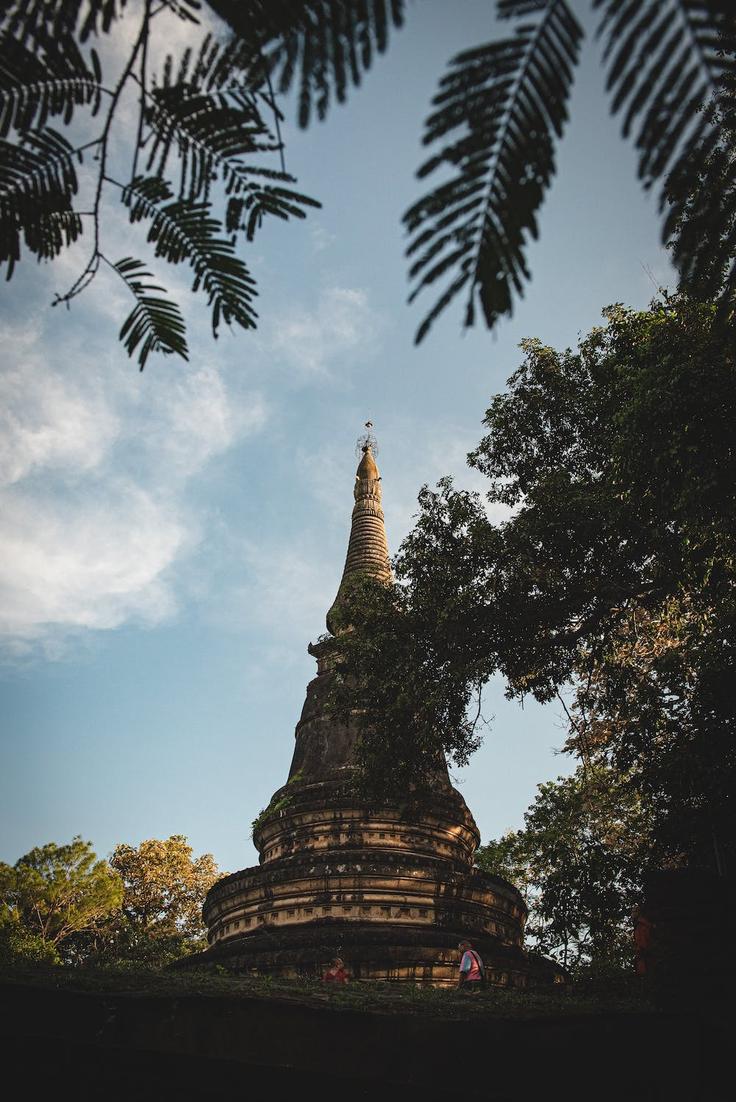
Wat Umong was built in the late 14th century by King Mangrai's son, King Kue Na, who sought solitude and tranquillity for his meditation practice. Legend has it that the king suffered from depression, and the temple was constructed to serve as a sanctuary where he could find solace and healing through meditation. The name "Umong" translates to "tunnels," a reference to the temple's network of tunnels and passageways used by monks for meditation.
What sets Wat Umong apart from other temples is its labyrinthine system of tunnels, adorned with ancient Buddha images and caves hidden within the lush forest surroundings. The temple's design facilitates meditative walking, providing an immersive experience for monks and visitors alike.
The temple grounds are dotted with several large and ancient trees, also known as "talking trees.” Local legend has it that these trees possess a mystical quality that allows them to "speak" to those who can tune into their vibrations.
Wat Umong features an array of intriguing stone carvings depicting various Buddhist scenes and teachings that have remained pretty much untouched. Wat Umong is a true hidden gem in Chiang Mai, offering an almost mystical experience to those who seek spiritual connection.
13 Wat Loi Kroh
Wat Loi Kroh stands as a peaceful sanctuary, offering a unique blend of historical charm and local culture. The temple's name, "Loi Kroh," holds a fascinating legend, recalling a time when weary travelers sought refuge here, finding solace and shedding tears of relief upon their arrival.

Wat Loi Kroh is, actually, one of Chiang Mai's oldest temples, preserving traditional Thai architecture and artistic heritage. Its ornate chedi, adorned with intricate mosaics crafted by local artisans, adds to the temple's aesthetic allure. This tranquil haven holds deep spiritual significance, attracting visitors in search of inner peace and a connection to the past.
In the inside, visitors inmediately witness monks in their spiritual practice, and the peaceful gardens invite quiet reflection and meditation. Legend has it that the temple's name, "Loi Kroh," stems from a touching tale of weary travelers finding comfort and relief upon reaching its hallowed grounds, adding to its allure and mystique. How awesome is this?
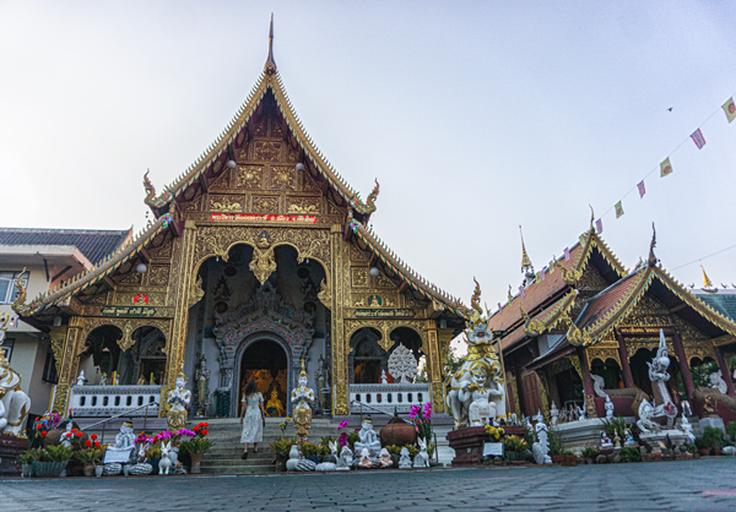
14 Wat Buppharam
One of the standout features of Wat Buppharam is its distinctive Burmese-style chedi (stupa). The chedi's design showcases a blend of traditional Lanna and Burmese architectural elements, creating a visually striking monument. Its unique shape and intricate details make it a not-to-be-missed sight when in Chiang Mai.
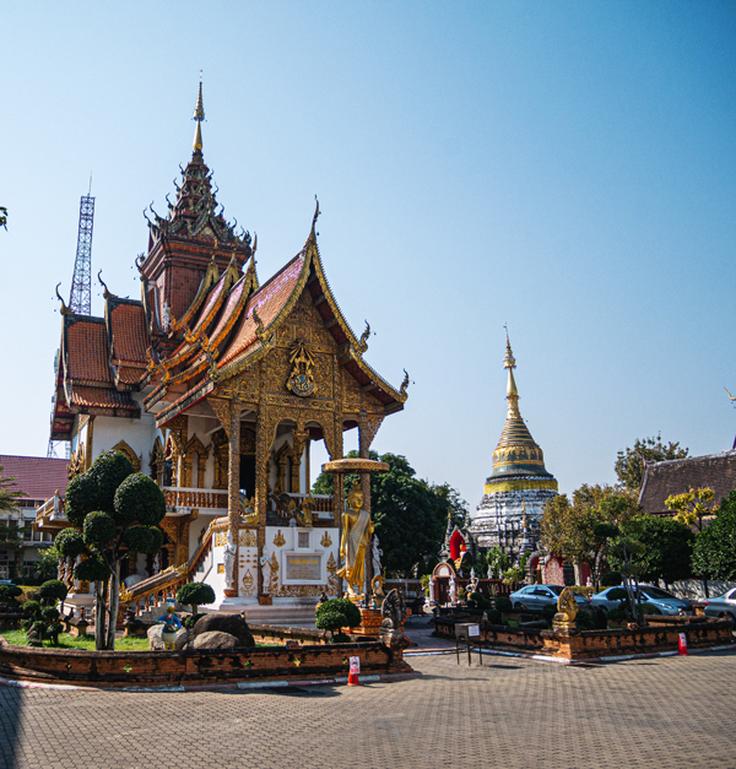
The temple also features a gorgeous pond adorned with blooming lotus flowers, adding to the tranquillity and beauty of the surroundings. Wat Buppharam is sometimes affectionately referred to as the "Monkey Temple" due to the playful monkeys that inhabit its surroundings!
*Pro-tip: Be careful with macaques, they might look friendly but they can be aggressive despite being cute! Don’t touch!
Wat Buppharam is well-known for its lively and vibrant atmosphere, especially during important Buddhist festivals. During these festivities, the temple comes alive with colourful decorations, traditional performances, and the joyful presence of locals and visitors alike. One of the most celebrated festivals at Wat Buppharam is Songkran, the Thai New Year's water festival, where participants splash water on each other as a symbol of cleansing and renewal. Pretty awesome!
Local Belief: "The Naga Serpent's Blessing"
One intriguing belief surrounding Wat Buppharam involves the Naga serpent, the mythical creature often revered in Buddhist folklore. According to local legend, a sacred Naga serpent resides in the temple's underground tunnels and waters. It is believed that the Naga serpent bestows blessings and protection upon those who visit the temple with sincere devotion.
As a result of this belief, some visitors come to Wat Buppharam seeking the Naga serpent's blessings for good fortune, prosperity, and protection from harm. They may perform rituals and offerings, such as pouring water over a Naga statue or making merit by giving alms to the monks, as a way of showing respect and seeking the Naga's favour.
15 Wat Suan Dok
The temple's central chedi is a captivating sight with its imposing size and distinct design. What makes this chedi particularly remarkable is that it houses the ashes of several former Chiang Mai rulers. It serves as a royal mausoleum, honouring the memory of the Lanna Kingdom's esteemed leaders. This makes Wat Suan Dok a place of great historical importance and reverence.
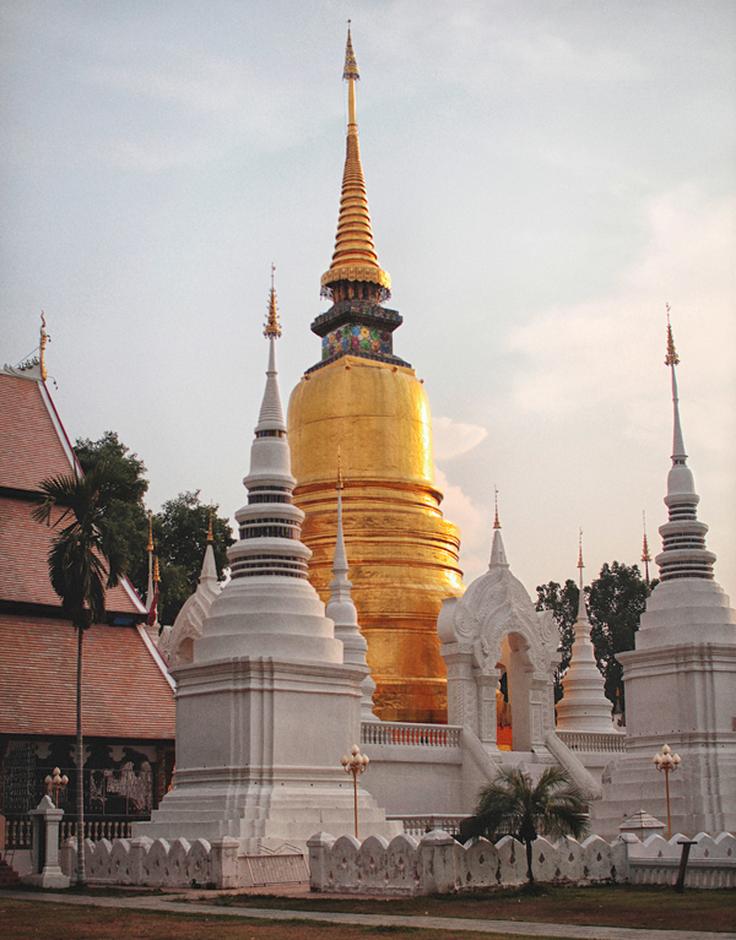
Legend of the White Elephant
One of the fascinating legends associated with Wat Suan Dok involves a sacred white elephant. According to the legend, a revered monk named Sumana Thera had a vision of a white elephant wandering the jungle. He interpreted this vision as a sign from the heavens, indicating the chosen location for the temple.
Upon hearing about the vision, King Kue Na, the ruler of Chiang Mai, was inspired to build Wat Suan Dok at the exact spot where the white elephant was seen. The temple's name, "Suan Dok," translates to "Flower Garden," possibly referencing the lush surroundings where the white elephant appeared.
Wat Suan Dok is home to a prestigious Buddhist university known as Mahachulalongkornrajavidyalaya University. This university is one of the most renowned centers of Buddhist education in Thailand and attracts scholars and students from around the world.
Wat Suan Dok is one of the five temples in Chiang Mai that are often referred to as the "Silver Temples" due to their shining silver and aluminium structures. The others in this group include Wat Jet Yot, Wat Sri Suphan, Wat Lok Molee, and Wat Mon Dok Daeng.
Evening Monk Chant
Visitors to Wat Suan Dok have the opportunity to witness the serene and mesmerizing evening chanting ceremony performed by the monks. This ritual is a beautiful experience that allows visitors to immerse themselves in the enchanting sounds of traditional Buddhist chants.
16 Wat Chom Thong
Wat Chom Thong, also known as Wat Phra Thart Chom Thong, is a beloved temple located on the outskirts of Chiang Mai, but worth the little detour from the city! Wat Chom Thong has a long and illustrious history, dating back to the Lanna Kingdom era. The temple was established during the reign of King Mengrai, the founder of the Lanna Kingdom, in the 13th century. Over the centuries, the temple has undergone renovations and restorations, but it has managed to preserve its ancient charm and cultural heritage.
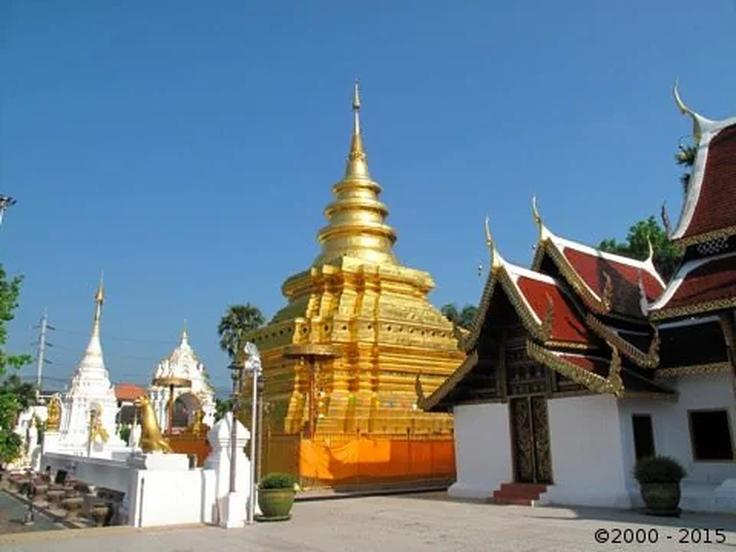
According to local legend, Wat Chom Thong is believed to house a sacred relic of Buddha's hair. This relic is a source of veneration and resembles tiny jujube seeds, boasting perfectly round and uniform contours. Their delicate off-white hue mirrors the subtle shade of withered Medlar flowers, exuding an aura of timeless sanctity. Wat Chom Thong's chedi is a striking feature of the temple. The chedi is built in a mix of Lanna and Sri Lankan architectural styles, showcasing a blend of cultural influences.
Final thoughts
There you go! Now you hold the key to an unforgettable exploration of Chiang Mai's spiritual treasures. With these 16 mesmerizing temples, you'll witness the beauty of ancient architecture, immerse in profound legends, and experience the tranquility of sacred grounds.
